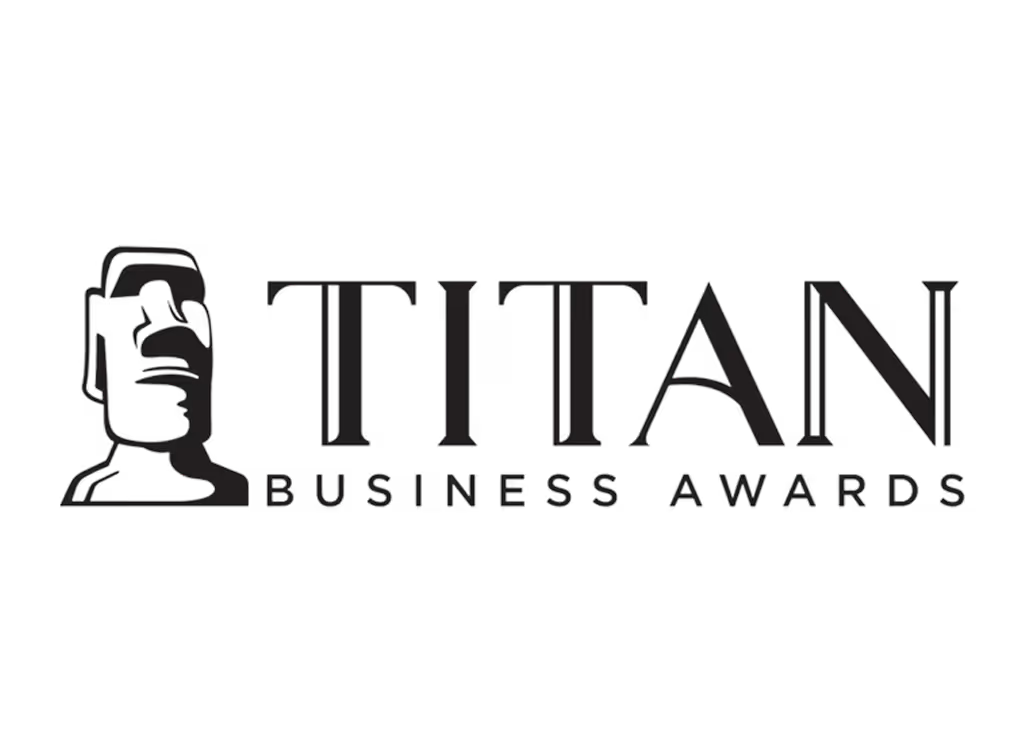Try Ad Platforms with Multi-Language Support

Expanding into new markets often requires adopting a multi-lingual approach.
Using ad platforms with built-in multi-language support can give your campaigns the extra edge needed to effectively engage global audiences.
In this article, we’ll explore the key benefits of multi-lingual ad platforms, including enhanced targeting, increased conversion rates, and simplified campaign management across languages.
Introduction
Reaching global audiences is key for businesses aiming to expand their customer base and increase revenue. However, connecting with diverse markets often requires communicating in multiple languages. This is where multi-language ad platforms come in.
These platforms empower businesses to create ads optimized for different languages and cultures. Instead of needing separate campaigns for each target country, you can centralize efforts under one roof.
In this article, we'll explore the key benefits of using ad platforms with multi-language support and provide tips for getting started. Understanding how to make the most of these capabilities can give your business a valuable competitive edge.
Understanding the Need for Multi-Language Ad Platforms
Expanding reach beyond domestic borders is essential for growth. However, only creating English ads severely limits potential customers.
- According to Common Sense Advisory, 73% of global consumers prefer content in their native language. Targeting audiences in their own language resonates more effectively.
- There are over 7,000 languages spoken worldwide. English only reaches 25% of internet users. Supporting additional languages significantly expands possible reach.
- Creating localized content is crucial but difficult to manage across multiple campaigns. Multi-language ad platforms centralize this effort with AI-powered translations.
The ability to easily target global users in their native language removes a major barrier to international growth. It also saves considerable time and effort compared to managing separate localization efforts.
The Competitive Edge of Multi-Language Campaigns
Businesses that utilize multi-language ad platforms gain key advantages:
- Wider Audience Reach: Supporting the most popular global languages allows tapping into broader markets with each campaign.
- Increased Engagement: Users strongly prefer content in their native language. Multi-language ads drive more clicks and conversions.
- Operational Efficiency: Managing fewer campaigns with centralized localization simplifies marketing operations.
- First Mover Advantage: Being early adopters of multi-language gives a competitive edge in untapped non-English markets.
With these benefits, it’s clear that utilizing ad platforms with multi-language capabilities provides major opportunities for growth and improved efficiency.
What is a tri ad benefits card?
The TRI-AD BenefitCard is a prepaid benefits card that allows users to pay for eligible health care expenses, such as doctor's visits, prescriptions, and dental services.
When using the card, it can sometimes be unclear what exact service or item was paid for. For example, at a dentist's office, a filling would be considered an eligible expense, while teeth whitening would not.
The card aims to streamline paperwork by automatically approving transactions within benefit limits at the point of sale. However, users should still save receipts or statements in case clarification is needed on what was purchased.
Checking statements regularly can help identify any ineligible or fraudulent charges. If unsure whether an expense qualifies, users can contact the benefits card provider for assistance.
How do I contact tri ad?
To contact tri ad, you can submit a request by:
- Calling 800-733-7555
- Emailing info@tri-ad.com
When submitting a request, be sure to include:
- Your full name
- Contact information (email and phone number)
- Details on your request or question
An tri ad representative will respond to your request as soon as possible. Typical response times are within 24-48 hours.
Identifying Multi-Language Marketing Objectives
Before expanding into new markets, it's important to clearly define your goals and how they translate across languages and cultures. Consider the following when setting multi-language marketing objectives:
Setting Clear Goals for Global Reach
- Determine what success looks like in each target language - are you aiming for more leads, sales, or brand awareness? Set specific, measurable goals.
- Research cultural nuances and preferences in your target markets to shape messaging and offerings accordingly.
- Prioritize languages based on market size, growth potential, and ease of localization. Focus first on the most promising opportunities.
Mapping Out Multilingual Customer Personas
- Create detailed buyer personas for each language group identifying their pain points, preferred content format and style, influencers they follow, and media consumption habits.
- Outline their customer journey to determine the best channels and touchpoints for multi-language ad targeting.
- Continuously test and optimize personas and messaging based on campaign performance in each language.
Having clear objectives and customer knowledge will allow you to craft relevant, effective multi-language ad campaigns tailored to each market. Continuously refine based on data and feedback.
Selecting the Right Ad Platforms for Multilingual Campaigns
As businesses expand into global markets, having multilingual ad platform capabilities becomes crucial for effectively reaching diverse audiences. When selecting an ad platform, focus on ones that provide robust translation and localization features to amplify your multichannel campaigns across languages and regions.
Comparing Multi-Language Support Features
When evaluating platforms, consider these key criteria:
- Number of supported languages - Look for platforms supporting at least 30 major world languages to maximize reach. Prioritize languages spoken in your target markets.
- Accurate translations - Ensure translations sound fluid and natural versus awkward machine translations. Human review processes yield higher quality localized ad copies.
- Adaptable ad formats - Opt for platforms allowing ad format customization across geographies, respecting cultural nuances.
- Collaborative workflows - Choose platforms with team workflows for sending ads out for translation, approving translations, adapting creatives, etc.
- Performance reporting - Select platforms providing language-specific campaign analytics to optimize for each market.
Carefully vetting features for multi-language support will allow you to get the most value out of cross-border campaigns.
Integration with Existing Marketing Tools
When expanding marketing efforts globally, integration capabilities are vital for managing complex multi-channel, multi-lingual campaigns efficiently.
Ideal platforms should:
- Offer open API for simple integration with your existing martech stack.
- Provide analytics integration to consolidate cross-channel performance data.
- Support bi-directional sync between platforms to maintain continuity as you scale campaigns.
- Have collaboration features enabling teams to work seamlessly across tools.
Choosing a platform complementing current tools avoids disruption as you augment global initiatives and streamlines processes under one umbrella. With the right integrations, you can achieve unified visibility across all languages and markets for optimized decision-making.
sbb-itb-606b7a1
Leveraging Automation in Multi-Language Ad Platforms
Automation can be a game-changer for managing multi-language campaigns efficiently. AI and machine learning tools allow you to optimize and localize ad content quickly across different languages and markets.
Automated Translation and Localization Strategies
Automated translation tools integrated into ad platforms provide efficient localization workflows. Some key benefits include:
- Cost and time savings - Automated translation eliminates the expense of human translation which allows for faster campaign launches. This enables testing different language markets rapidly.
- Consistency - Machine translation applies consistent terminology and style across all translated content. This strengthens campaign branding and messaging globally.
- Adaptability - If campaign objectives shift, automated translation makes it easy to update and relaunch translated ads. There's no dependency on external translation resources.
- Quality - Modern machine translation continues to improve in accuracy. While occasional manual review is still recommended, overall quality is often sufficient for testing ad performance.
When leveraging automation, be sure to confirm the platform offers robust multi-language support spanning your target markets. Monitoring translations and refining as needed is also advised.
Optimizing Campaigns with AI and Machine Learning
AI and machine learning optimize multi-language ad delivery and performance by:
- Market Research - Analyzing historical ad data to uncover the top-performing ad copy, images, calls-to-action, etc. for each language market. This intelligence informs asset creation.
- Performance Prediction - Estimating an ad's potential click-through rate for a given market based on its content, design, and other attributes. Platforms can then optimize delivery to higher performing ads.
- Dynamic Optimization - Continuously monitoring campaign metrics and automatically optimizing for the best ad rotations, budgets, targeting, bids, etc. per language.
- Creative Iteration - Using performance data to automatically test variations of ad copy, visuals, etc. and iterate on the highest performing assets.
The efficiency and scale of AI allows every language market to benefit from these optimizations simultaneously. Campaigns can leverage the full power of test and learn methodologies across global audiences.
When reviewing platforms, ensure robust AI and machine learning capabilities for multi-language campaigns. The technology should streamline optimization while still providing marketer controls.
Mastering Multi-Language Ad Creation and Management
Creating and managing ads across multiple languages can seem daunting, but with the right tools and strategy, it can be simplified. Here are some best practices for streamlining multi-language ad creation and management:
Designing Ads for a Global Audience
When creating ads aimed at international audiences, it's important to ensure the messaging resonates across cultures. Here are some tips:
- Research cultural norms and taboos to avoid imagery or text that could be offensive. What works in one market may not translate well to others.
- Adapt imagery and icons to be meaningful to local audiences. Regional aesthetic preferences vary.
- Translate copy to connect emotionally. Direct translations don't always convey the right tone or evoke the desired feeling. Work with native speakers to capture the essence.
- Test extensively before launching. Preview translated ads with target users to catch issues early. Iteratively improve based on feedback.
- Remain on-brand globally. Maintain visual identity and core messaging while allowing room for localization.
Following these guidelines will allow you to craft globally appealing, culturally sensitive multi-language ads.
Efficient Campaign Management Across Languages
Managing campaigns across various languages introduces complexity. Here are some strategies to streamline processes:
- Centralize assets and translations in one platform to enable easy access by all team members without duplication across tools.
- Leverage automation for scaling translations and ad variations. AI-powered creative automation reduces manual busywork.
- Build structured campaigns with clearly defined objectives so iterations stay on track across markets.
- Use visual asset management with tagged, organized image libraries to simplify versioning creative for different locales.
- Monitor performance centrally with dashboards displaying multi-language campaign analytics side-by-side for optimization.
With the right workflows centered around automation and centralized asset libraries, you can efficiently manage high performing campaigns tailored for global audiences.
Following these best practices will lead to simplified processes, saving time and resources while still allowing customization for local relevance. With the right technology, multi-language ad creation and management can be achieved without complications.
Analyzing and Optimizing Multi-Language Ad Performance
Measuring the success of your multi-language campaigns is crucial to determining what's working and what needs improvement. Here are some tips for analyzing performance and optimizing for better results across languages.
Key Metrics for Multilingual Ad Analysis
When analyzing your multi-language ad performance, focus on these key metrics:
- Impressions and reach: How many times were your ads seen? How many unique users did they reach? This indicates the scale and exposure of your campaigns.
- Click-through rate (CTR): The number of clicks divided by impressions. Higher CTR signals an ad that resonates with the target audience.
- Conversion rate: What percentage of users take your desired action (make a purchase, sign up, etc) after clicking your ad? This directly measures effectiveness.
- Cost per conversion: How much money are you spending to acquire each customer? Lower is better.
Compare metrics across languages to determine high and low performers. Identify your most valuable language markets to double down on.
Continuous Improvement Through A/B Testing
Run A/B tests to refine and improve multi-language ad performance over time. Test different:
- Ad copy: How do subtle copy tweaks impact CTR and conversions? Identify phrasing that strongly resonates.
- Visuals: Do certain images, videos or graphics make your ads more compelling? Measure performance.
- Targeting: Try narrowing or expanding your target audience parameters. Monitor effect on relevance.
- Landing pages: How do changes in post-click landing pages affect conversions?
Experiment across languages, then scale up the winning variations. Continual testing leads to ads highly optimized for every language market.
Following a data-driven process for iteration will maximize the results of your multilingual campaigns.
Navigating Cultural Differences in Advertising
Cultural sensitivity is key in multi-language advertising. Understanding the nuances of different cultures can help avoid missteps when expanding campaigns globally.
Avoiding Common Pitfalls in Cross-Cultural Advertising
When advertising in multiple languages, it's important to avoid common cultural pitfalls that could undermine your messaging:
- Assuming your messaging translates universally: Word-for-word translations rarely convey the right cultural meaning. Subtle adaptations to phrasing or imagery may be needed. Work with native translators to localize messaging appropriately.
- Using imagery that seems innocuous: Visuals that seem harmless in one culture may be offensive or insensitive in another. Do thorough research on cultural norms for imagery and symbolism. When in doubt, ask locals from each target market.
- Relying on stereotypes: Avoid depictions based on cultural clichés, as they often misrepresent real-life norms and values. Strive for authenticity - get input from people within each culture when creating visual assets.
- Ignoring critical cultural nuances: Factors like color symbolism, gestures, social etiquette rules and religious practices vary greatly between cultures. Study up on the distinct dos and don'ts for each market you advertise in.
Adapting Brand Messaging for Cultural Relevance
While staying true to your core brand identity, consider where adaptation is needed to resonate across cultures:
- Evaluate imagery and symbolism: The aesthetics, motifs and visual metaphors that embody your brand may land differently across cultures. Consider where new creative assets or styling adjustments make sense.
- Assess cultural values: Does your brand messaging align with the cultural values of a given market? Emphasizing certain product benefits over others can better cater to what locals care about most.
- Get native input: Work directly with local team members or partners in each target market to assess needed adaptations. They can provide critical guidance to ensure brand messaging feels culturally authentic.
With research, localization expertise and native collaboration, brands can avoid critical missteps when activating multi-language campaigns. Sensitivity to nuances and values is key for breakout success globally.
Case Studies: Successful Multi-Language Campaigns
Businesses aiming to reach global audiences know that launching multi-language ad campaigns can be key to tapping into new markets. To inspire your own localization efforts, let's examine some real-world examples of companies that got it right.
Breaking Language Barriers: A Global Success Story
Outdoor equipment retailer Mountain Shop was struggling to gain traction outside English-speaking countries. Though product demand was high worldwide, language barriers on their website and ads prevented growth.
By partnering with an ad platform offering multi-language support, Mountain Shop launched translated campaigns optimized for 10 top markets.
Results:
- 840% increase in international sales
- Expanded to 24 languages within a year
- Ranking #1 on search for outdoor gear in non-English speaking countries
Key Takeaways:
- Multi-language ad copy outperformed English ads 3:1 across regions
- Localized messaging and culturally relevant images proved more effective
- Flexible self-service platform easily supported additional languages
By eliminating language pain points, Mountain Shop tapped into global demand and saw sales skyrocket.
Localized Campaigns: Winning in Niche Markets
Portuguese smartwatch startup Pulse aimed to compete with top brands by targeting fitness enthusiasts in Brazil.
They created localized video and display ads translated to Brazilian Portuguese. The campaign focused on:
- Highlighting unique health tracking features
- Promoting an active, healthy lifestyle
- Using Brazilian cultural references
Results:
- 13X increase in sales in Brazil
- Top selling smartwatch in niche fitness category
- Strong brand recognition and loyalty
Tailoring messaging and visuals for the Brazilian audience was key to Pulse's breakout success despite being a small startup.
Key Takeaways:
- Localization enabled connecting better with target market
- Niche localization efforts can drive major returns
- Startups can leverage multi-language platforms to compete globally
Carefully crafted localization unlocks opportunities to thrive in specific global markets.
Conclusion
Trying ad platforms with multi-language support can provide significant benefits for businesses looking to expand their reach globally. Here are some key takeaways:
- Multi-language ad platforms allow you to easily create and optimize ads for different markets without needing to hire translators or manage multiple campaigns. This saves time and money while still allowing you to speak to international audiences effectively.
- These platforms tap into large databases of high-performing ads and marketing copy in different languages. This means the AI can suggest on-brand, optimized ad copy tailored for specific regions and languages.
- Multi-lingual ad platforms analyze cultural nuances and differences in global markets to ensure your ads resonate appropriately with target audiences. The AI handles challenging translations, interpreting slang, humor and other complex linguistic and cultural elements.
- You can A/B test different ad variations in different languages and continuously optimize based on performance data. This takes the guesswork out of international marketing.
- Look for ad platforms that allow easy collaboration across teams and departments. This enables smooth handoffs of assets and projects across borders and languages.
In summary, multi-lingual ad platforms significantly simplify and enhance reach to global audiences. The AI handles much of the heavy lifting of translations, optimizations, and campaign management across different markets. This allows focusing time, money and energy on core business goals rather than complex multi-regional marketing efforts.

















